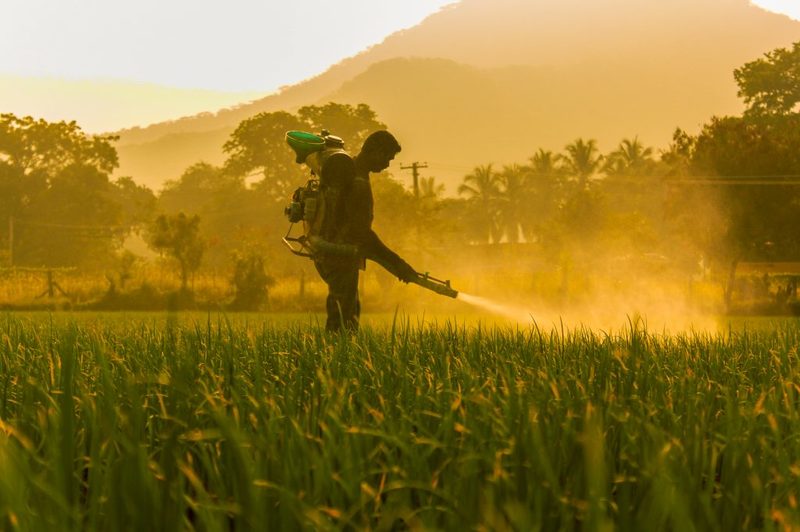Are you wondering what are some pesticide application practices that can help maximize the benefits and minimize the risks of using pesticides? Then, you’re in the right place to seek answers; continue reading to learn more.

Defining Pesticides
As stated by the National Institute of Environmental Health Sciences, pesticides are used to kill, dissuade, or control pests. Pests can be insects, plants, birds, mammals, or fish; as long as these creatures cause damage and spread illnesses, they can be considered pests.
Here are some kinds of pesticides:
- Herbicides are used against unwanted plants.
- Insecticides are used to control various insects.
- Fungicides are utilized to thwart fungi and their spores.
- Disinfectants are applied to prevent the spread of bacteria.
- Rodenticides are for fighting rodents such as mice or rats.
Pesticide consists of active and inert substances. That ingredient classifications each play a specific role in assembling a pesticide product.
Chemicals that can kill or repel pests are those active ingredients. At the same time, inert ingredients are compounds added to a product to perform crucial functions such as increasing shelf life, acting as a solvent, promoting safety, and so on.
Some active ingredients are Acephate, Atrazine, Azaconazole, Bifenthrin, Bifenazate, Boric Acid, Chlorothalonil, Cypermethrin, Diatomaceous Earth, Fipronil, Pyrethroids, and many more. Here are a few examples of inert ingredients: beeswax, salt, peanuts, cellulose, other edible oils, spices, herbs, and many more.
Pesticide application methods
Ensuring that you applied pesticide correctly would make you achieve the desired effect. Knowing when and how you should use a specific kind of pesticide is a must for it to work as to how you want it to be.
There’s dusting, spraying, granular application, seed pelleting, seedling root dip, sett treatment, stem injection, padding, swabbing, root feeding, soil drenching, capsule placement, baiting, and fumigation. Each of those stated has its way of proper applications; familiarize yourself with how one should use each of those methods through this article about pesticide application methods.
Pesticide Application Practices: Do’s and Don’ts
What is the best scheme to dissuade the risks that come with pesticides? Prevention is the answer, but other than that, knowing what you can and can’t do can also help keep you and your surroundings safe.
Here is a short list of do’s and don’ts that you must apply to your pesticide application practices:
Do’s
- Keep away pets, children, and other sensitive people.
- Identify and know your pests well.
- Choose ready-to-use products if you are doing it on your own.
- Select effective pesticides. Avoid repetitive use to ensure that pests wouldn’t gain resistance.
- Dispose of leftover pesticides properly.
- Always follow the instructions on the label.
- Know the necessary first-aid details before proceeding with the usage of pesticides.
Don’ts
- Don’t spray the whole room or area.
- Don’t use pesticides outdoors to indoors and vice versa.
- Don’t transfer pesticides to another container.
- Don’t purchase more than what is needed.
- Don’t dispose of pesticides down the drain.
- Please don’t reuse the container unless it’s for the same pesticide.
- Don’t mix two different pesticides unless approved by professionals.
What to achieve before, during, and after the application of pesticides?
For a safer and more effective usage of pesticides, it’s best to adhere to the instructions and pieces of information displayed on its label. Other than what is stated on the pesticides label, the following are what you have to keep in mind when applying pesticides:
Before
- Keep away pets and people that could be negatively affected by pesticides.
- Tidy up the area.
- If it’s indoors, make sure that you store food and kitchen utensils in a place that is sealable. Covering with plastic can add protection.
- If it’s indoors, you can cover the heavy furniture and equipment and remove lighter ones temporarily.
- Know the pest that infested the area and its source.
- Choose the best method that will certainly eliminate the problem. If it’s a pesticide that is your best choice, be sure to choose those with low risk.
- Read the label on the pesticides. Know here why is it important to read the pesticide labels first.
During
- Be sure to wear proper protective equipment.
- Use suitable
- Make sure to follow the label on the pesticide.
- Apply accurate dosage.
- Used pesticide only against its specific targeted pests.
- Don’t eat, drink, or smoke.
- Directly apply pesticides on the area affected to ensure that it is coated evenly.
After
- If you did it on your own, be sure to let it sit for a while before cleaning.
- Thoroughly rinse all pieces of equipment used.
- Wash the protective equipment you wore separately from your other laundry.
- Properly store pesticide in its original container, in a place that pets or children wouldn’t reach. Make sure that it is far from where your food is too.
- Monitor the area regularly.
For a piece of additional information, visit this article about what are the benefits of short-term pesticide control.
Conclusion
To know what are some pesticide application practices for a safer process, you’ll need to keep in mind all do’s and don’ts to be applied before, during, and after.
With all the things listed above, you can now do it in a much more manageable way; but be sure to keep your and other people’s health in your mind. Always proceed with caution.
